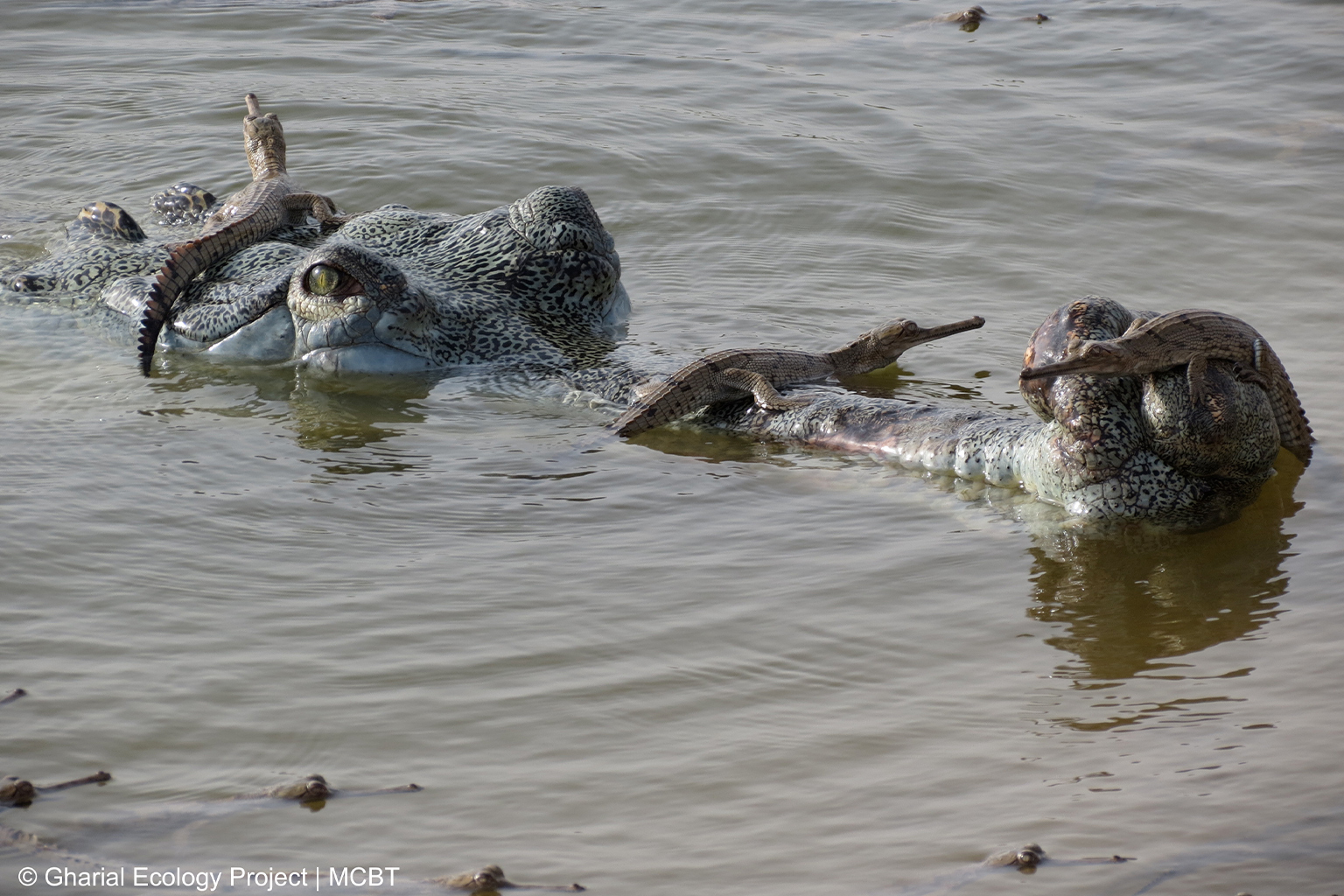
A male gharial guarding hatchlings. Image courtesy of Gharial Ecology Project/MCBT
Gharials are a unique looking crocodile species. They have long, thin snouts and sharp teeth that are adapted for grabbing fish.
Gharials once roamed the Ganga River and its tributaries that flow through the plains of Nepal and India. Today, gharials only live in a few rivers in the Ganga Basin. Sadly gharials are critically endangered.
Gharials have disappeared from most of their original river habitat because of conflict with humans. People have hunted them, changed the river flows they need for hunting fish, and built dams and other human structures that displace them.

A gharial hatchling. Image courtesy of Rikki Gumbs/ZSL
In Nepal, the main gharial population lives in Chitwan National Park. In a recent population count, park officials counted 265 individual gharials in the Rapti and Narayani rivers that flow through Chitwan in, up from 239 during the previous year’s count. This is an 11% increase in the gharial population.
“This is indeed encouraging news as we concentrate our efforts towards saving the crocodiles,” said Ashish Bashyal, a researcher with the organization Biodiversity Conservancy Nepal. “While it is nice to celebrate the achievement, we must not forget that the gains could be temporary and the population could decline at any time if threats are not addressed in time.”

A female gharial guards a creche of hatchlings in Nepal. Image courtesy of Phoebe Griffith/ZSL
Since 1978, Nepal has run a program to raise gharials in captivity and release them to supplement the wild population. As part of the effort, officials in Chitwan and Bardiya national parks collect gharial eggs from riverbanks. They then provide a suitable environment for the eggs to hatch in, and feed and raise the young ones until their release at around 5 years of age. The program is credited with saving the species from going locally extinct in Nepal.
A problem for the Chitwan population of the gharials is the poor survival rate of juveniles and young adults released under the captive-breeding program. While 404 gharials were released into the river in Chitwan National Park, the overall population grew by only 80. Many of the released gharials are not showing up in the counts.
“Either their mortality [death] is pretty high as they are not adapted to living in the wild, or they are washed away downstream to India and can’t swim back,” said researcher Ranjana Bhatta. “One possible solution is to release the juveniles as [far] upstream as possible in the Rapti River, where their densities are high,” she said.

A female gharial basking on the banks of Chambal River, India. Image courtesy of Jailabdeen/Gharial Ecology Project, MCBT
David Brown adapted this story for Mongabay Kids. It is based on an article by Abhaya Raj Joshi, published on Mongabay.com:






